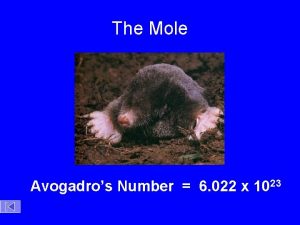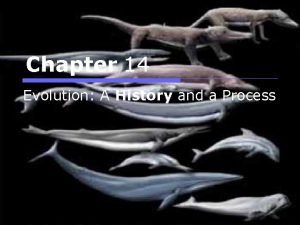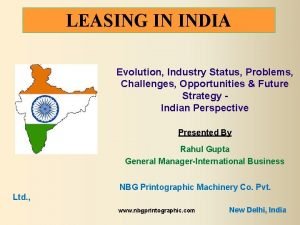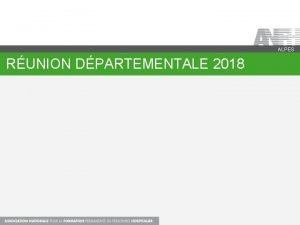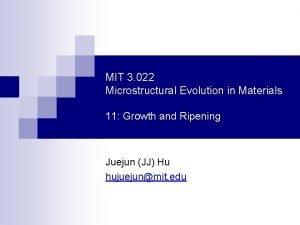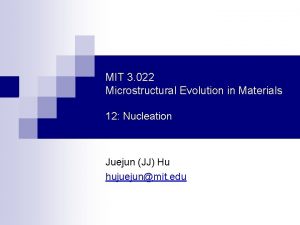MIT 3 022 Microstructural Evolution in Materials 15

















- Slides: 17

MIT 3. 022 Microstructural Evolution in Materials 15: Glass Transition Juejun (JJ) Hu hujuejun@mit. edu

3. 071 Amorphous Materials Sapphire vs. tempered glass: which is better? 3 -d printing with glass What is Liquidmetal®? Glass: where arts and science meet

“The Nature of Glass Remains Anything but Clear” “What don’t we know? ” Science 309, 83 (2005)

Glass transition H, V Supercooled liquid Liquid Glass transition Ø Suppression of crystallization: glass formation Ø The glassy state is different from the supercooled liquid state Ø Fictive temperature Glass Crystal Tf Tm

Glass structures are dependent on history H, V Supercooled liquid Liquid Increasing cooling rate ü Glasses obtained at different cooling rates have different structures ü Faster cooling results in higher Fictive temperature 3 2 1 Tm T

What is glass? n G A metastable solid which exhibits glass transition and has no long-range atomic order Metastable glassy state Thermodynamically stable crystalline state Structure ü Glasses are metastable with respect to their stable crystalline phase ü Atoms can rearrange to form a more stable state given enough time and thermal energy

What is glass? n A metastable solid which exhibits glass transition and has no long-range atomic order A fictitious A 2 O 3 2 -D compound: A 2 O 3 crystal A 2 O 3 glass ü Short-range order is preserved (AO 3 triangles) ü Long-range order is disrupted by changing bond angle (mainly) and bond length ü Structure lacks symmetry and is usually isotropic Zachariasen's Random Network Theory (1932)

Potential energy landscape (PEL) PE Ideal glass Laboratory glass states Crystal Atomic coordinates r 1, r 2, … r 3 N

Laboratory glass transition: ergodicity breakdown n Liquid: ergodic n Glass: nonergodic, confined to a few local minima n Inter-valley transition time t : E : barrier height n : attempt frequency Glass Liquid

Crystal nucleation and growth Metastable zone of supercooling ü Driving force: supercooling ü Both processes are thermally activated Tm

Time-temperature-transformation (TTT) diagram Driving force (supercooling) limited Critical cooling rate Rc Diffusion limited R. Busch, JOM 52, 39 -42 (2000)

Critical cooling rate and glass formation Material Critical cooling rate (°C/s) Silica 9 × 10 -6 Ge. O 2 Technique Typical cooling rate (°C/s) 3 × 10 -3 Air quench 1 -10 Na 2 O· 2 Si. O 2 6 × 10 -3 Liquid quench 103 Salol 10 Droplet spray 102 -104 Water 107 Melt spinning 105 -108 Vitreloy-1 1 106 -108 Typical metal 109 Selective laser melting Silver 1010 Vapor deposition Up to 1014 Maximum glass sample thickness: a : thermal diffusivity

Summary n What is glass? ¨ n Why are glass properties history-dependent? ¨ n Metastable solids exhibiting glass transition and lacking longrange order Glass structure can be trapped in different metastable basins and is path-dependent How to determine the cooling rate necessary for glass formation? ¨ Time-temperature-transformation (TTT) diagram

THE FOLLOWING PREVIEW HAS BEEN APPROVED FOR ALL 3. 022 PARTICIPANTS R RESTRICTED VIEWERS WHO HAVEN’T TAKEN KINETICS REQUIRE ACCOMPANYING MIT DMSE STUDENTS STRONG MATERIALS SCIENCE COMPONENTS www. classratings. com ® dmse. mit. edu

We proudly present “Microstructural Evolution in Foods” Image Credit: profkarim CC BY-SA 2. 0

List of symbols n H – enthalpy n V – volume n Tm – melting point n T – temperature n Tf – Fictive temperature n G – Gibbs free energy n tobs – observation time, duration of experimental observation n t – intervalley transition time, time it takes for a system to transition from a local metastable energy basin to another n n – attempt frequency or atomic vibrational frequency n k – Boltzmann constant (1. 38 × 10 -23 m 2 kg s-2 K-1)

List of symbols n E – average energy barrier height between metastable states n Tg – glass transition temperature n Rc – critical cooling rate to prevent crystallization n DT – supercooling corresponding to the nose temperature n a – thermal diffusivity n dmax – maximum thickness of sample that can maintain a homogeneous glassy state
 Discriminantes putativas
Discriminantes putativas Tel 022
Tel 022 6 022 x 10^23
6 022 x 10^23 What are useful materials at home
What are useful materials at home Man made map
Man made map What is adopting materials
What is adopting materials Cant stop the feeling trolls go noodle
Cant stop the feeling trolls go noodle Direct materials budget with multiple materials
Direct materials budget with multiple materials Chapter 5 evolution and community ecology
Chapter 5 evolution and community ecology Evolution successive
Evolution successive Chapter 23: the evolution of populations
Chapter 23: the evolution of populations Chapter 14 evolution a history and a process
Chapter 14 evolution a history and a process Problems of leasing in india
Problems of leasing in india Lesson 17: patterns and processes of evolution
Lesson 17: patterns and processes of evolution Gesform evolution
Gesform evolution Genetic algorithms
Genetic algorithms Darwin
Darwin Unit 10 evolution test answers
Unit 10 evolution test answers


